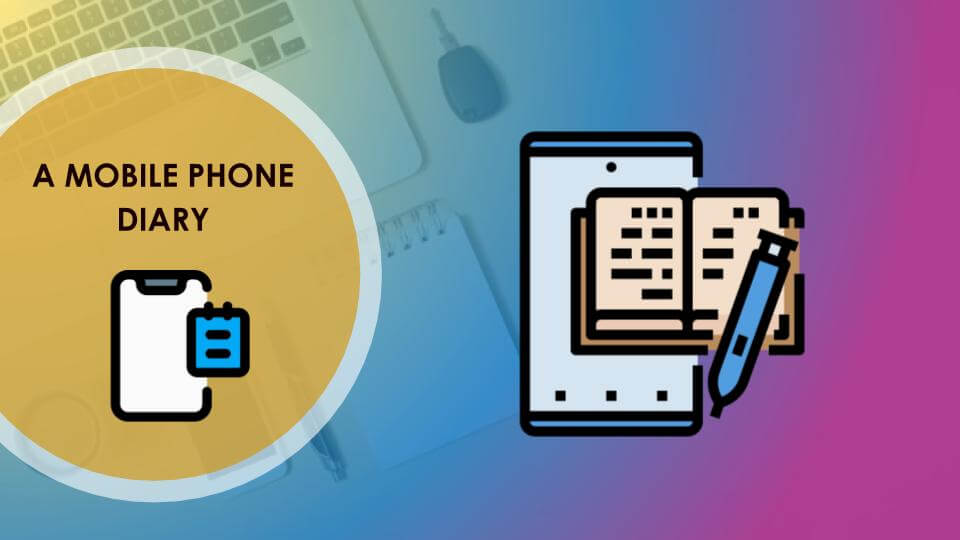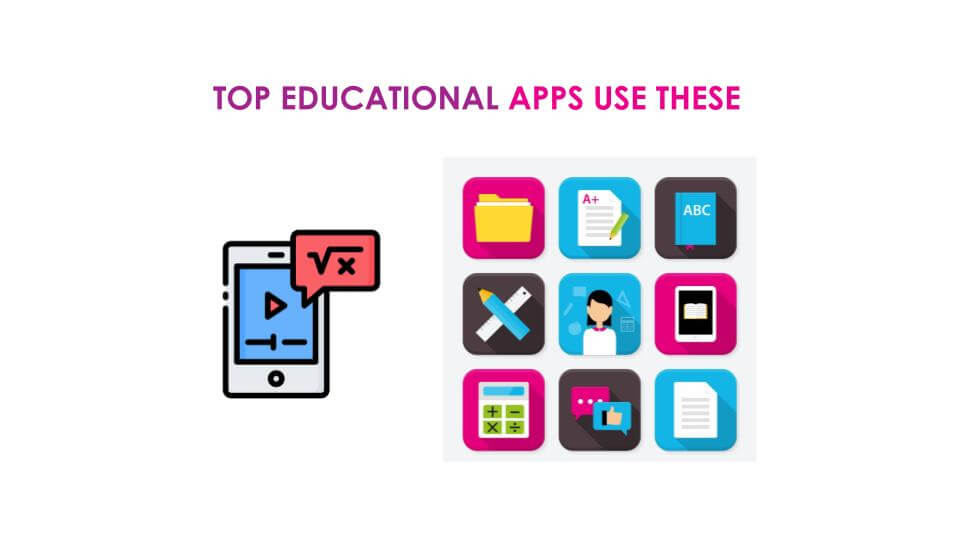Using Smartphones in the Classroom
Mobile phones in the classroom have always been a controversial topic. Some teachers worry about the potential for student distraction, while others have decided to use them because they offer some positive learning benefits. The reality is that students, especially those ages 12-18, use smartphones on a daily basis. For most, smartphones are their device of choice, and nearly all 95% of all teens have them (Pew Research, 2018). Because this device is so commonplace, it makes sense to leverage its benefits.
From a distance learning perspective, a smartphone is a tool that can be used for research, as a mobile diary, a voice recorder, for making videos, and much more. As a modern educator, you need to learn how to promote the educational uses of smartphones in a constructive way that supports learning.
Here are four simple ways to facilitate the educational use of smartphones:

Mobile Phone Diary
#1 Mobile Diary
Think about it, how many times have you had a great idea in the classroom, only to forget about it later because you didn’t write it down? With a smartphone, you can eliminate that from happening ever again. Encourage students to use their smartphones as mobile diaries. The benefits of journaling and recording observations, thoughts, and feelings, are well-documented. As an educational tool, keeping a mobile diary can help students improve their writing, problem-solving skills, increase self-awareness and motivation, and reduce stress.
Help your students learn how to create various types of journals. Perhaps your course would benefit from a motivation journal, or a gratitude journal, a subject matter-specific journal, a success journal used to document successes or a free-form journal. You can encourage students to type directly into their smartphones using the onscreen keyboard or use voice commands to jot down ideas or concepts as they journal. Journaling is a great example of a transferable skill that will help students become better learners. It can also help students assemble and convey complex emotions and ideas. Consider asking students to submit their journals, which will give you a deeper look at their thought processes and help you get to know them better.
#2 Email Usage
People who have smartphones tend to enjoy the convenience of being able to check their email with the tap of a touch screen. Notifications can be set up when new messages are available, and studies show that on average, most people check their email more than ten times a day. Email is also one of the best ways to stay in touch with parents and students. While students may prefer text messaging over email, email is a better source of professional communication. Students will eventually be expected to manage their own emails, and you can help them become better prepared for that future.
Consider sending students personalized emails as an additional “touchpoint” apart from your learning management system. You can use email to simply check in with students to make sure they are keeping up with their online learning. Use email to check in with parents to ensure they are informed about their children’s progress. In general, it’s best to send students and parents individual emails because many people do not want to “reply to all” with private information about their children. Consider using the power of a private, personalized email for most of your online communications. Use email to send messages to a large list of students or parents for announcements and celebrations.
#3 Your Learning Management System
Your learning management system (LMS) can be used with a smartphone. I have yet to find an LMS system that has not been designed to accommodate both student’s and teachers’ access with a smartphone. The Google Classroom, for example, can be easily accessed from a mobile phone.
Let parents know that their children can access the LMS l from their smartphones. You may want to encourage students to download the LMS app and enable notifications so they can stay informed about course content, access assignments, and grades.
#4 Completing Forms
Teachers have many forms, paperwork, and essential documents to complete on a regular basis. Sometimes, being able to fill out Google forms in the palm of your hand is preferred. You can gain valuable insights into your students’ progress by using online forms that students can fill out from their smartphones. You can even take forms a step further and offer online trivia and use online quiz tools such as Kahoot. Kahoot is a tool many educators use to turn forms into fun online quizzes that students can take online. This is a fun way to gamify your lessons. Perhaps you can organize students into teams and keep score of their group quiz scores. Turning learning into a game can make students more engaged with your lessons.

TOP EDUCATIONAL APPS
Smartphones as Educational Tools
Smartphones are advanced technological tools that help students learn and teachers teach and improve workflows. In the educational setting, technology can enhance the learning experience and give students the ability to engage with content in new ways. One of the most popular smartphone solutions are iOS devices — iPhones and iPads —many of which are used in online classrooms.
Historically, mobile phones have often been banned from classrooms. But when educators start to look at iOS devices as educational tools, it’s easy to uncover new learning potential.
Use It as An Educational Resource
Smartphones put the world at students’ fingertips, which can be good and a little bit frightening. Yet, this is the reality of the world we live in and educators are mentors and guides for productive uses for smartphones. When you have an iOS device on hand, you can easily research projects, connect with another classroom down the hall or contact a respected expert in a particular subject who can speak to you and the class with the power of an internet connection. WiFi connectivity has become faster and more prevalent in many schools and homes. Still, you may find that your WiFi connection is better in some locations versus others. You can instantly check your WiFi internet connection by using Google and searching for “Internet Speed Test.” Google will return the download and upload speeds for your device’s internet connection.
Educators have many tools they can use to limit potential distractions from smartphones. Ideally, educators should be able to shepherd student learning by highlighting the correct way to use smartphones for educational purposes and identifying potentially un-productive uses. For example, educators can recommend the use of purpose-built applications that limit the open world wide web to a specific set of tools and information. If students are being asked to use smartphones for research, consider recommending a specific app and demonstrating how it can be used for educational purposes. For example, if your class is learning about space, recommend that your students download the NASA app and show them how to use it. You never know when students will take learning home with them via an interesting app. Another great app that students can take home and use at night is called “Star Chart.” This app allows students to hold their phone up to the sky to reveal planets and stars that are all around the world.
Portability
Something that makes smartphones so profound is the fact that you can take them with you anywhere. From your car, to down the street, and across the town, as long as you have cellular service (or WiFi) you have a computer in your pocket. This means that you are more than capable of going out notes, or support on the go. You can even use it to capture videos of public speeches or interviews to present to your class.
Pro Tip: Try out the Google Assistant which can identify plant types, help with translations, and store notes about a variety of topics.
Use It for Language Translation
Do you have a student who speaks better in Spanish than English? If so, use the language translation applications on your device to converse with that student without language barriers getting in the way. Duolingo is a popular translation application which is free to download and supports over 30 languages. Google Translate is a great free tool as well, which works directly inside of any Chrome web-browser. You can gain more features by downloading the app onto your phone. Google Translate supports over 100 languages. Both of these apps give students the option to speak in their native language and can promote a more inclusive learning environment.
Pro Tip: Try Google Translate and see how easy it is to bridge language barriers with the conversation tool.
Collaboration Usage
Smartphone devices are filled with incredible features and offer countless applications to increase collaboration between you and your students. For example, students can use their smartphone devices to stay connected to your online learning resources with the LMS (Learning Management System) app your school uses. Students can view and engage with the content you create for online learning segments via their smartphones.
Pro Tip: Show students how easy it is to use a speech-to-text function to engage with course materials. The use of this function may lead to higher levels of engagement with your content. You can also show students how to enable text to speech (demonstrated in the online course), which \reads pages of information to students automatically.
Conclusion
While there are some teachers who remain against phones in the classroom, there is no denying the benefits especially, in a distance learning scenario. No matter what age group you teach, a smartphone can improve the efficiency of your classroom. For example, if you teach pre-school, i check out apps like ABCmouse, Hungry Caterpillar Play School, and many more.
People across the globe and in every industry are taking advantage of the iOS platform and smartphone devices. Despite concerns over the improper use of mobile devices in the classroom (online or physical), these devices have a role to play in motivating student engagement with content and learning.
Key Takeaways:
1. It’s easy to use a smartphone to create content for the online classroom.
2. Students can use their smartphones to journal, create diaries, and for email.
3. Google Suite for Education is the gold standard for educators and students. Use Google Forms to facilitate student feedback.
4. Learn the use cases for the top education apps designed for the online classroom.
5. In the online course, view a curated selection of the best apps for preschool, elementary school, middle school, and high school students.
6. Gamify your online lessons. Gamification is a great tool for educators.
7. Learn best practices for using iOS devices in the online classroom (iPhone, iPad) to make learning fun and interactive.
8. Understand and experiment with the use cases for speech-to-text, and text-to-speech.
9. Identify apps that help you devise creative assignments and lessons that will enrich students’ learning.
More Technology Tools for Online Education
- Download the full book Technology Tools for Online Education here
- Learn about video recording tools for educators here
- See the latest video communications tools for online education here
- Learn tips for using a document camera in the classroom here
- Tips for using touch screens in the classroom here
- Tips for using smartphones in the classroom here
- Learn about the role of the flipped classroom in online education here

